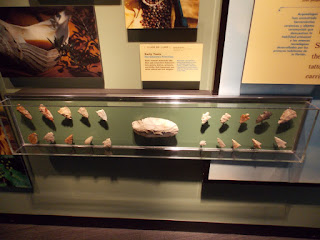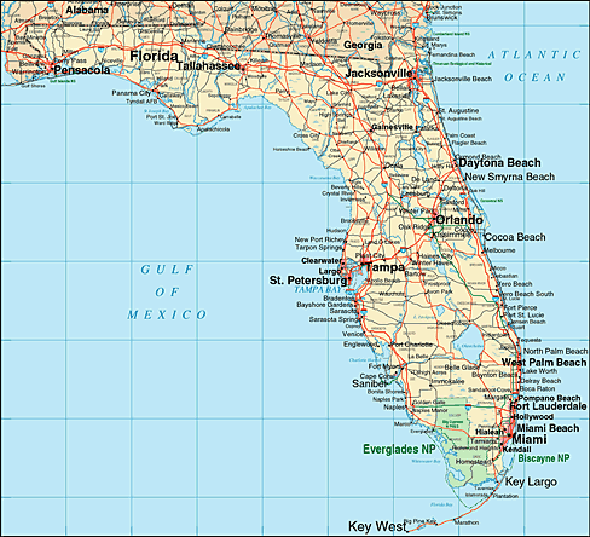In a glass-walled hall in the tiny St Petersburg FL Museum of History, a replica of a smallish “flying boat” biplane hangs from the ceiling. It is little-noticed by the tourists who walk past on their way to the beaches and high-end shops and bistros in downtown St Pete, but the Benoist XIV seaplane (pronounced “ben-wah”) made aviation history when it flew on January 1, 1914–it was the first regularly-scheduled commercial passenger airplane flight in the world.
In 1913, the Tampa Bay region was a little-known backwater in Florida, noted, if at all, for its cigars, phosphate fertilizers, and oranges. The area’s two largest cities, St Petersburg and Tampa, were on opposite shores of Tampa Bay. Only 21 miles of open water separated them, but no bridge was capable of crossing the Bay, and travelling from one “sister city” to the other required either a 2.5-hour steamboat ferry ride, or a 4-hour railroad trip completely around the Tampa Bay shoreline.
Enter St Petersburg resident Percival Elliott Fansler. Fansler sold boat engines for a living, but his interest in mechanics also led him to pay close attention to the new field of aviation. The Wright Brothers had flown ten years earlier, but by 1913 “aeroplanes” were still viewed by the public as novelties, something thrilling to watch (or, for the most daring, to take a short hop in over some fields as a passenger), but not really of much practical use.
In 1912, pilot Tony Jannus made the newspapers by flying, with a passenger, 250 miles along the Mississippi River from Paducah, KY to St Louis, in a Benoist “flying boat”–an airplane designed to take off and land on water. Jannus was already famous–he had piloted the airplane from which the first successful parachute jump was made, and already held several distance records for seaplanes. Intrigued by Jannus’s latest feat, Fansler began corresponding with the aircraft’s manufacturer Tom Benoist, and broached the idea of using a flying boat to ferry paying passengers across Tampa Bay. Benoist agreed to provide two seaplanes for the venture, and Tony Jannus as pilot, if Fansler could arrange funding for it. When the city of Tampa turned him down, Fansler went to the city of St Petersburg, which agreed to fund 50% of the needed $3,000 and to construct a hangar for the airplanes (at the spot where Albert Whitted Airport stands today). Eleven local businessmen together put up the rest of the money. The new “St Petersburg-Tampa Airboat Line” contracted with Benoist and the city of St Pete on December 17, 1913—ten years to the day after the Wright brother’s first flight–for two planes and pilots to make twice-daily flights six days a week from January to March 1914. The commercial airline was born.
REPORT THIS AD
The first Benoist Model XIV seaplane, Number 43, arrived in St Petersburg by train on December 12, 1913, some two weeks before its scheduled debut. Built of wood and canvas, the biplane had a wingspan of 44 feet and was 26 feet long. It weighed about 1250 pounds. Its Roberts six-cylinder inline engine produced 75 horsepower, enough to move the plane at a top speed of 64 mph. The engine was located in the lower front of the airplane, but the propeller was mounted at the rear of the cockpit in a “pusher” configuration. The cockpit had room for two–the pilot and one passenger–but on some flights two small passengers were crammed into one space. In addition to the regularly-scheduled flights to Tampa, charter trips could also be booked to Clearwater, Sarasota, Bradenton, Tarpon Springs, or Safety Harbor.
The local newspaper, the St Petersburg Times, promoted the upcoming flight extensively, and on the morning of January 1, 1914, a crowd of at least 3,000 people (almost half the entire city’s population) had gathered at the St Pete Municipal Pier, along the waterfront, to watch the spectacle, as a band played, speeches were made (Benoist himself had traveled from St Louis to Florida for the occasion), and ceremonial photos were shot. (One person in the crowd was the humorist Will Rogers, who was performing in St Pete at the time.) Although the regular price of a round-trip passenger ticket was $10 (about $200 in today’s money), an auction was held for the honor of taking the first flight–former St Pete mayor Abram Pheil won with a bid of $400, which the airline donated to the city government to help pay for installing harbor lights. Pheil climbed in, he and pilot Jannus waved to the crowd, and they took off. To save fuel and avoid winds, the plane flew just above the waves at an altitude of less than 50 feet (although, the advertising declared, the plane could go up to 1,000 feet “at the passenger’s request”). Partway through the 20-minute flight, the plane developed minor engine trouble–the drive chain that connected the engine to the propeller was slipping off its sprockets. Jannus landed on the surface of Tampa Bay, climbed out and adjusted the chain, and took off again. When they landed in Tampa at the mouth of the Hillsborough River, a crowd of 3,500 was there to greet them. After more photographs and speeches, Jannus and Pheil climbed into their plane once more, and were back in St Pete before lunchtime. (The waterfront area where he touched down in St Pete is still known as “Jannus Landing”–it is now an entertainment district and the venue for rock concerts.)
REPORT THIS AD
The St Petersburg-Tampa Airboat Line continued to operate until May 5–five weeks after its contract had expired. The airline’s two Benoist XIV planes (the second plane, Number 45, was piloted by Tony Jannus’s brother Roger–it was a little larger than Number 43 and could carry two passengers comfortably) made 172 scheduled flights, a large number of privately-chartered flights, and carried a total of 1205 passengers. In a publicity stunt, the St Pete Times booked cargo space for morning delivery of its newspapers to Tampa, while an enterprising florist in Tampa flew fresh flowers every day to customers in St Pete. The Port of Tampa required Jannus to obtain a “commercial pilot’s license”, which was issued by the US Department of Commerce in February. On the license, the word “steamboat” was crossed out, and “aeroplane” written in.
By May, most of St Petersburg’s “snowbird” residents and tourists had returned north for the summer, and passenger bookings dwindled. When the city’s contracted subsidy ran out, the Airboat Line continued another five weeks on a schedule of chartered flights, then ceased operations. Benoist planned to return later with a larger seaplane capable of carrying twelve passengers.
Just three months later, however, World War One–the impetus for enormous advances in aviation technology–broke out. Tony Jannus was killed in 1916 while training new pilots in Russia, when his Curtiss plane crashed into the Black Sea. His brother Roger was killed over France in a DH-4 bomber in 1918.
After the airline folded, the two Benoist aircraft were taken on tours of the US, giving airshows and taking passengers for rides. Number 45 crashed into the ocean during a flight in San Diego in 1915, and was destroyed. The original airliner, Number 43, crashed on a lake in Pennsylvania, was rebuilt, and returned to do airshows in St Petersburg in 1915, where it crashed in the Bay after losing a wing and was rebuilt again. In November 1916, Number 43 was crated for storage by the Benoist Company, and was never seen again.
In the early 1980’s, members of the Florida Aviation Historical Society began building a replica of the Benoist XIV Number 43, painstakingly recreating the plane from photos since no original engineering drawings could be found. Because no Roberts engines still existed, the replica had to use a 6-cylinder inline Chevrolet engine instead. On January 1, 1984, 70 years after Jannus’s first commercial passenger flight, the replica Benoist flew from St Petersburg to Tampa and back again. After being filmed for an IMAX movie that was shown at the Smithsonian Air and Space Museum, the replica Benoist was donated to the St Petersburg Museum of History, where it remains on display.









